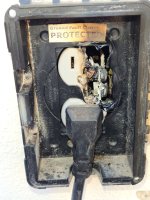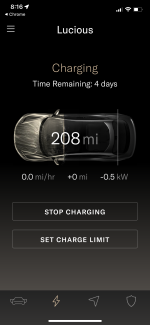Luci
Active Member
- Joined
- Apr 14, 2022
- Messages
- 128
- Cars
- Lucid Air - DE Red
- DE Number
- 308
As an EV newbie, looking for guidance to achieve a long battery life. Keeping in mind, we don't drive far on any given day (maybe 50-75 miles tops and even then, not daily)
1. Is it best to trickle charge with 110 and only to use the NEMA outlet when needing to power up at a faster pace?
2. Is it suggested to "exercise" the battery, that is to let it drop to 20-30 percent percent before powering back up to 80?
Guidance appreciated.
1. Is it best to trickle charge with 110 and only to use the NEMA outlet when needing to power up at a faster pace?
2. Is it suggested to "exercise" the battery, that is to let it drop to 20-30 percent percent before powering back up to 80?
Guidance appreciated.


